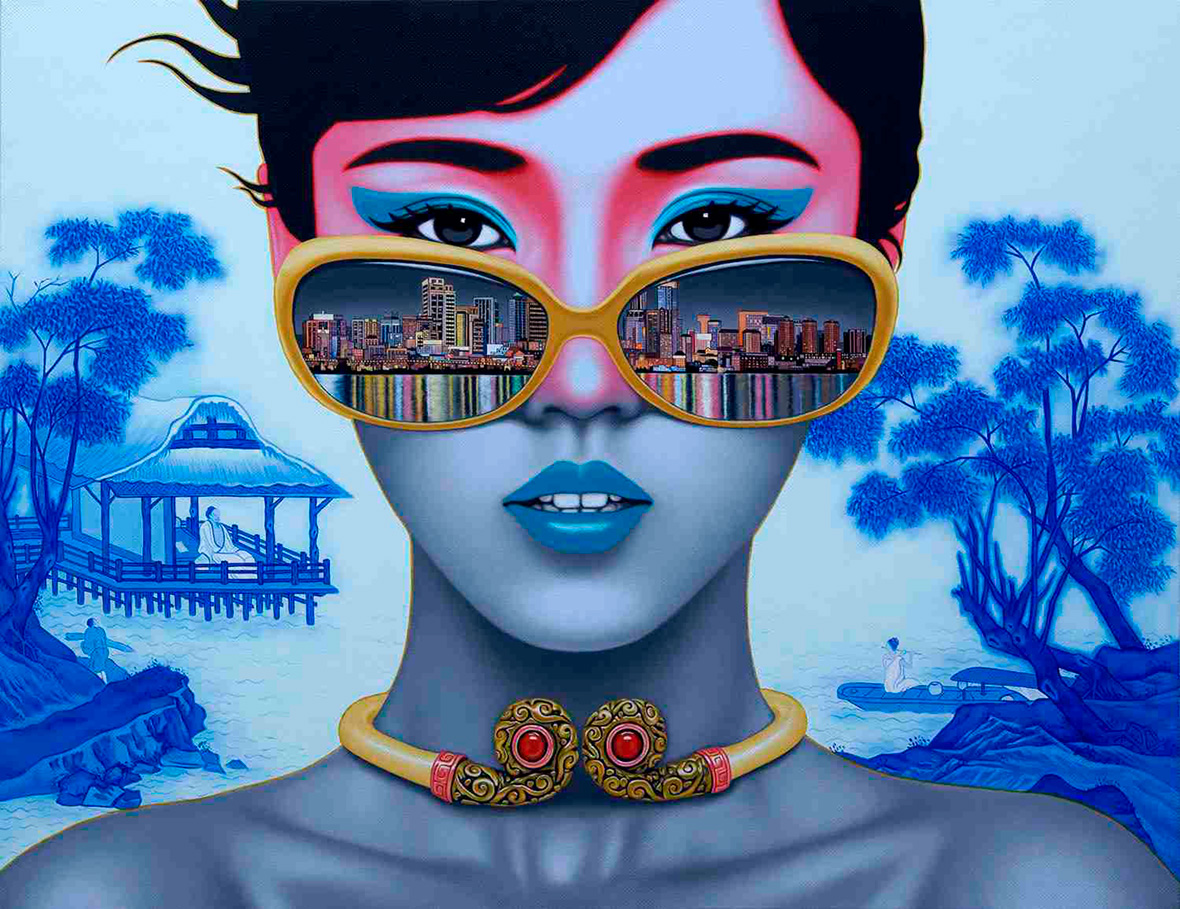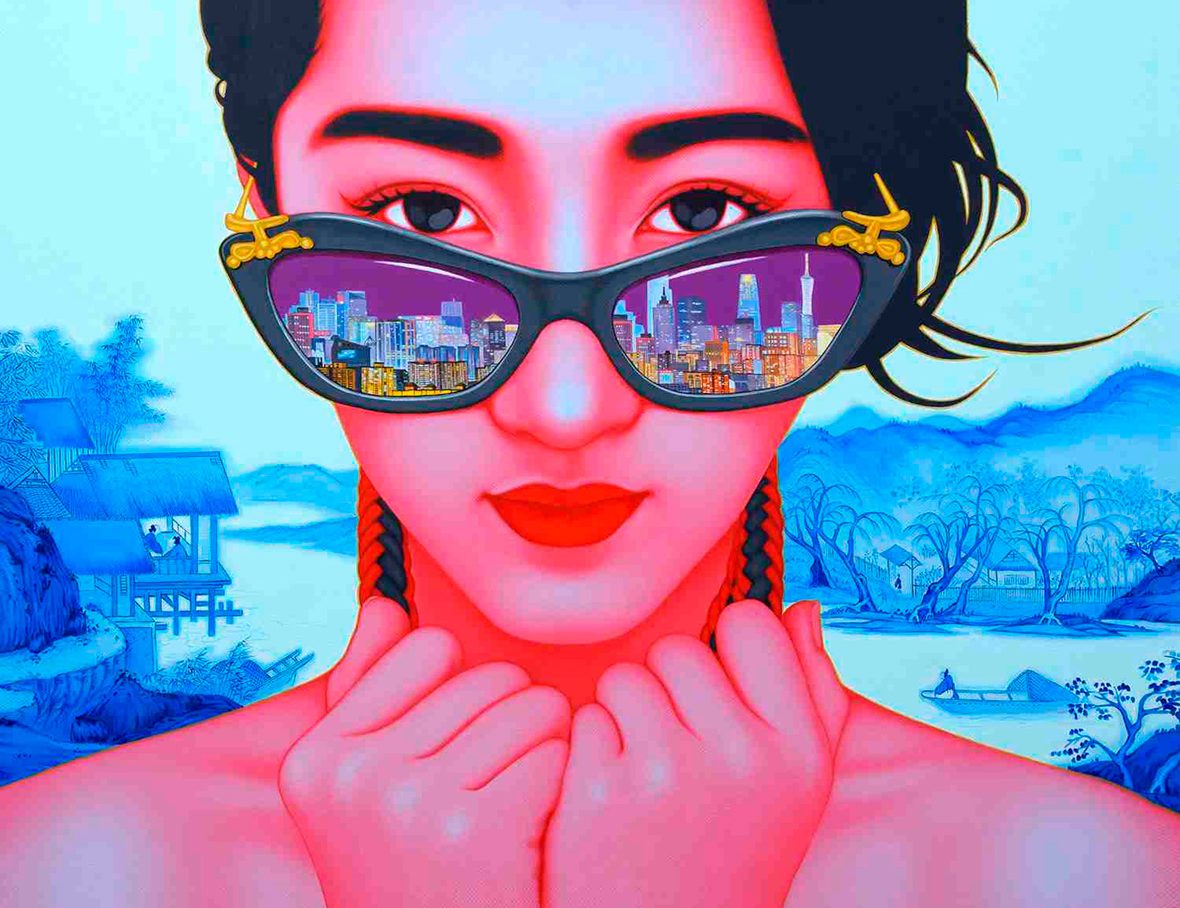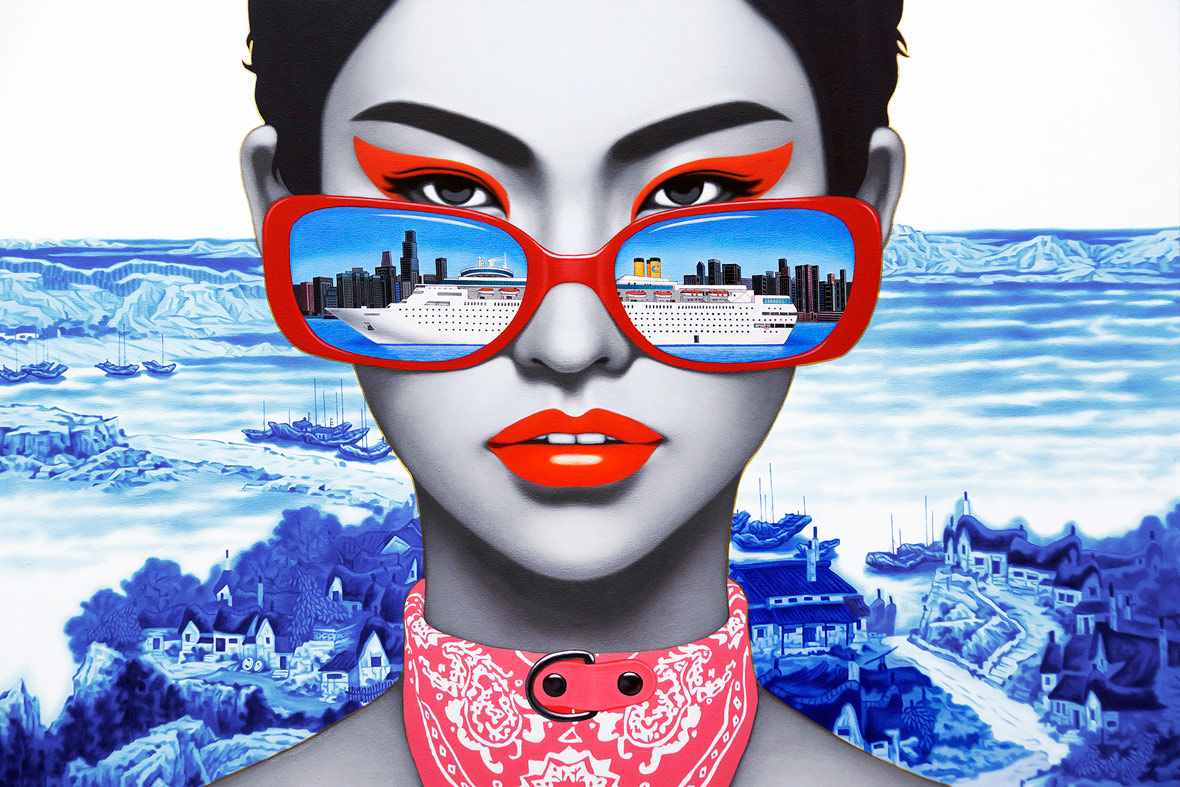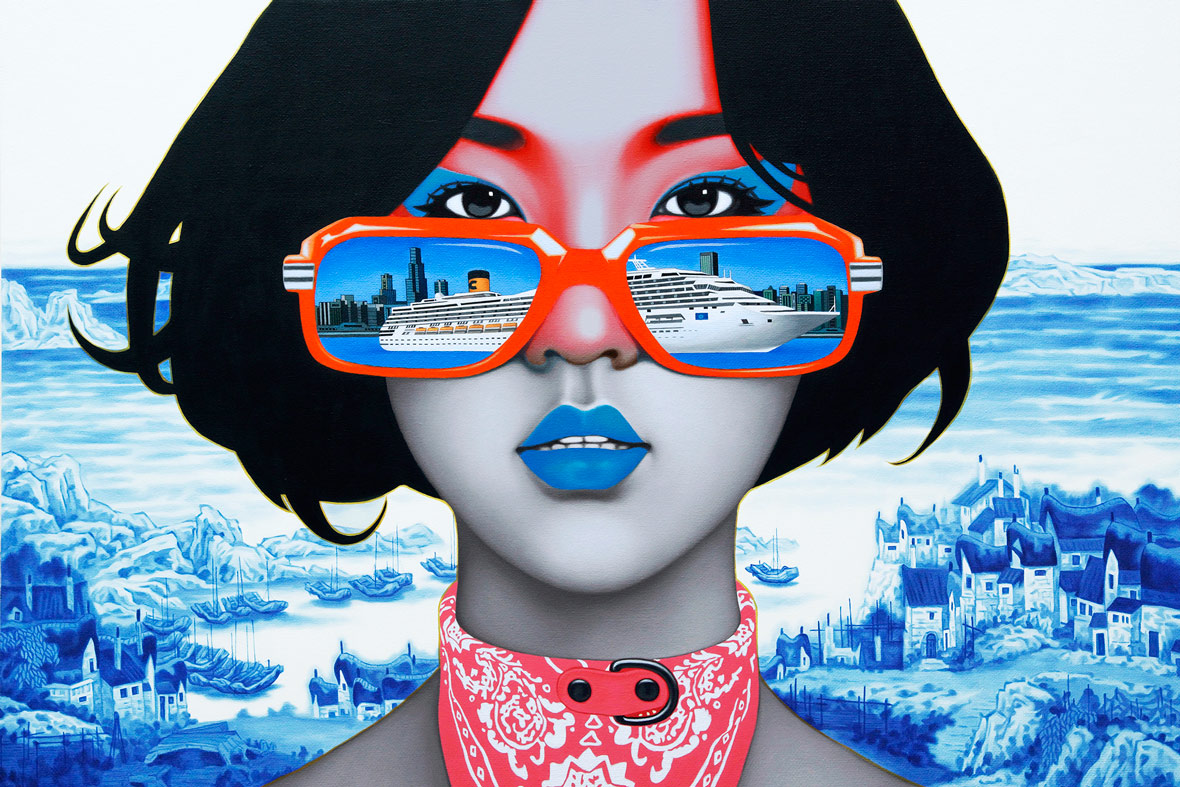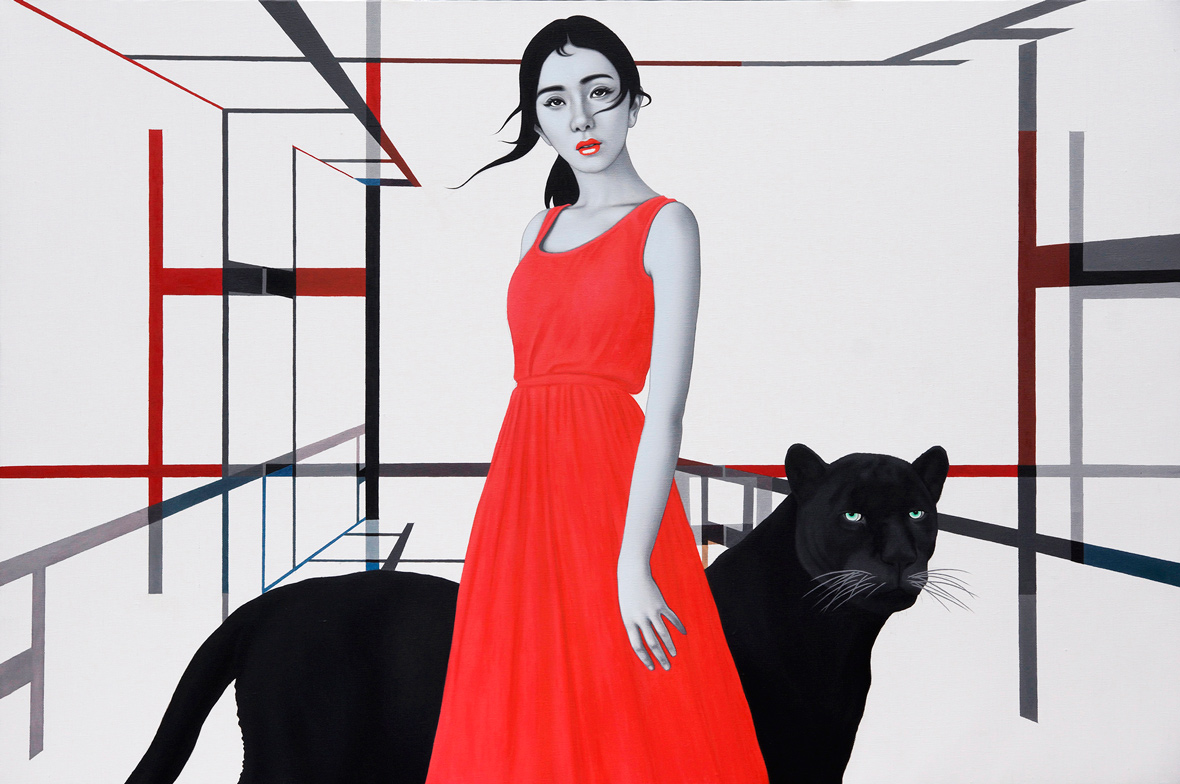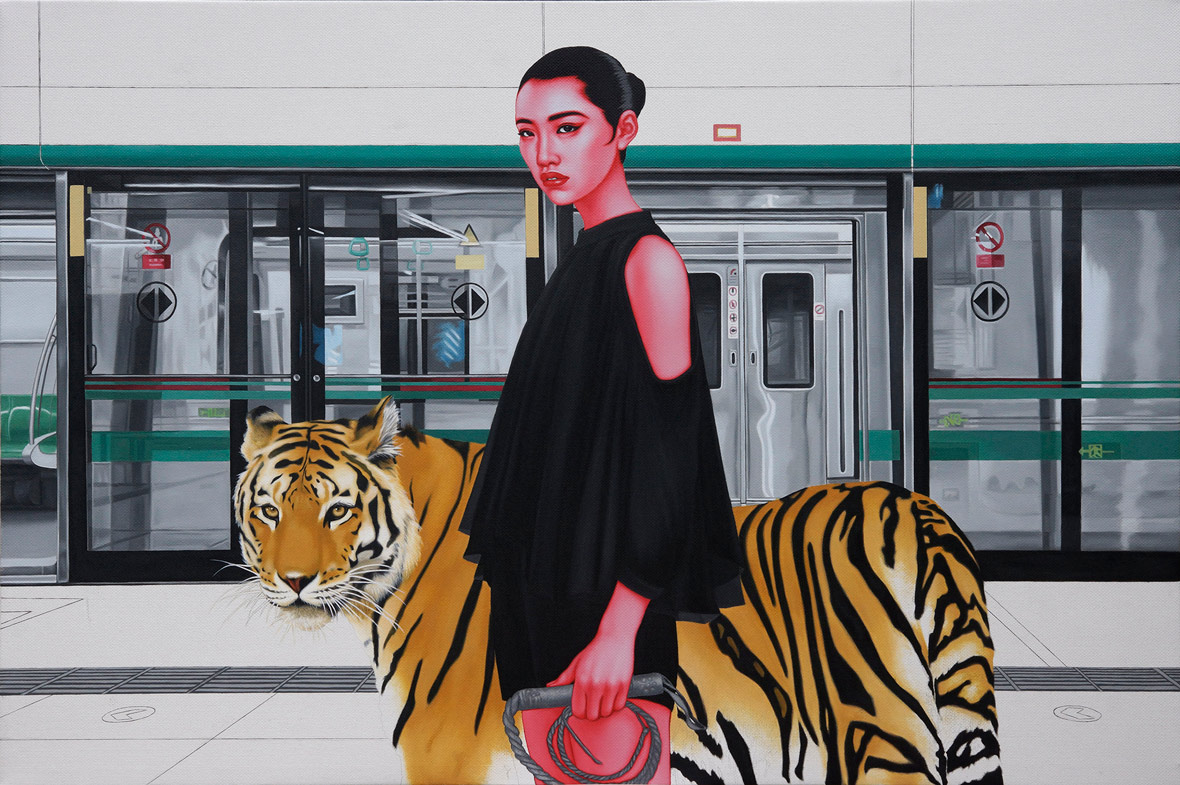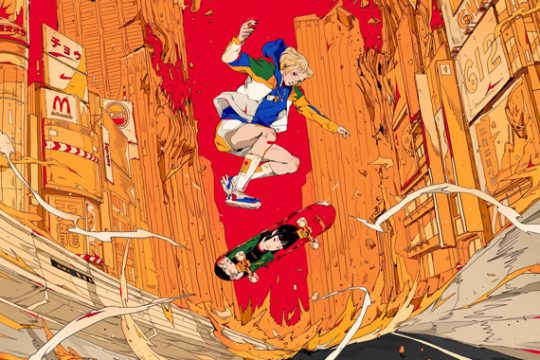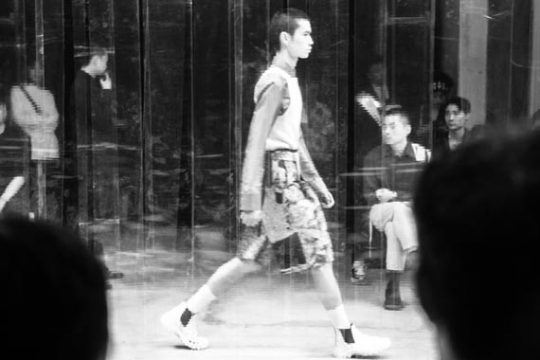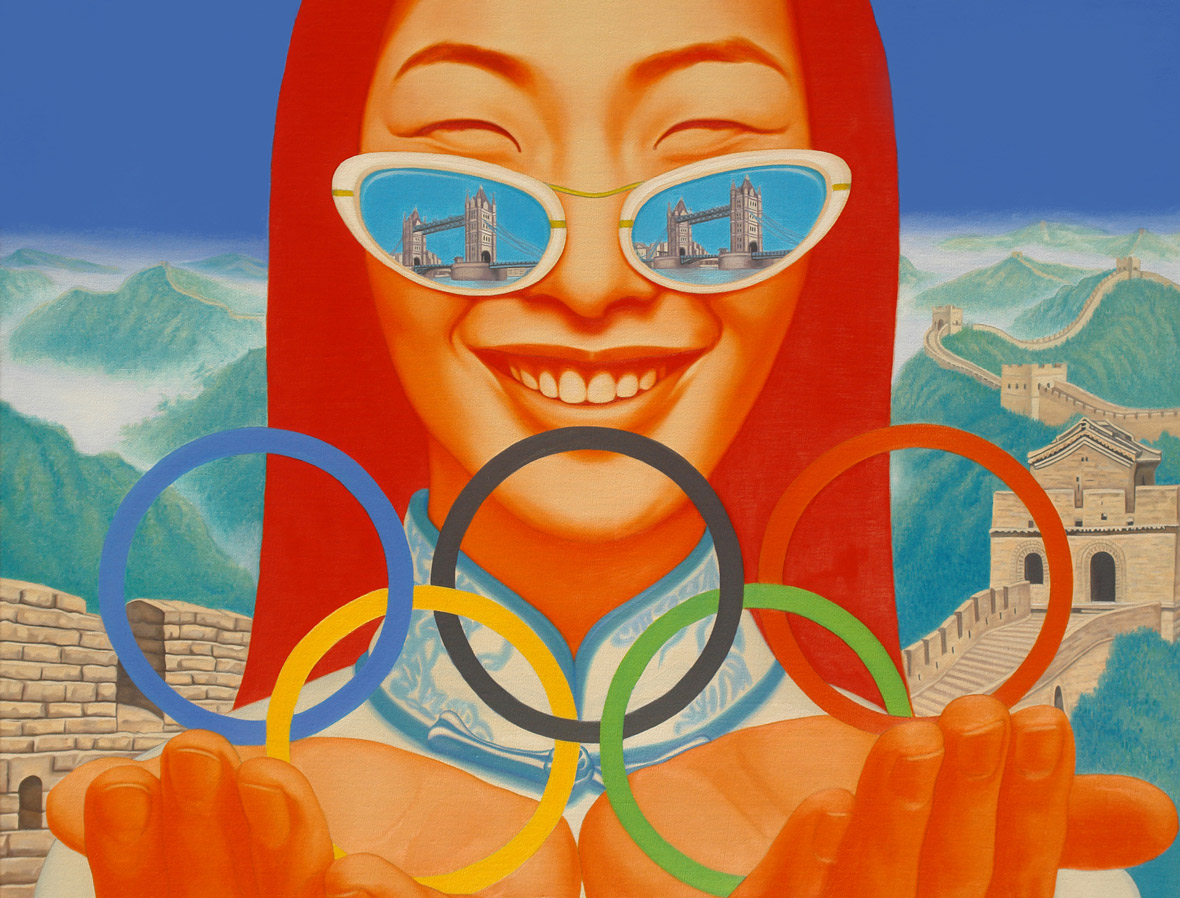
After the Cultural Revolution, China opened itself up to the world. As Western culture entered the country, so did its art, and the Chinese people embraced these foreign aesthetics. In 1985, American artist Robert Rauschenberg held ROCI China at the National Museum of Art in Beijing, which, for many, was their first encounter with pop art in the country. Pop art—which originated in the West from a desire to subvert fine-art traditions—became a eureka moment for many Chinese artists, inspiring them and paving the way for a new wave of Chinese art. The artists of this period, ever so eager to break the mold and work outside the bounds of tradition, laid the bedrock of Chinese modern art.
Shandong-born artist Xu Deqi was introduced to pop art in 1998, which he believes wouldn’t have been possible without the foundation set by the early pioneers. Artists directly influenced by Rauschenberg went on to light Xu’s creative wick. At the time, he was studying contemporary art at Beijing’s Academy of Fine Art, having already completed a bachelor’s in oil painting at Shandong Normal University. “My professor was Yi Jinan, who’s now an acclaimed art critic,” he recalls. “He had a profound influence on me. He invited twelve avant-garde artists to speak to the class, and that’s how I was turned onto contemporary art.”
A departure from his background in traditional oil painting, pop art gave him a renewed perspective on art, on how he can express his creativity in bolder strokes. “Contemporary artists in the West are often vehemently against traditional methods,” he says. “But Chinese artists embrace the ways of the old and believe in building atop the roots. This outlook is what makes Chinese art so different.”
作为当代艺术的分支,波普艺术在中国的传播开始于上世纪八十年代中期。经历“文化大革命”和“个人崇拜时期”之后,西方的科技和人文随着“改革开放”的步伐进入大众视线,人们的思路和眼界也逐渐被打开。1985 年,“新潮美术” 运动伊始,艺术家们在接触了西方艺术形式之后,渴望打破传统艺术框架对创作的限制。同年,德裔美国画家罗伯特·劳申伯格(Robert Rauschenberg)在中国美术馆进行了波普艺术展览,那是历史上第一次波普艺术进入中国人眼球。波普艺术一贯以挣脱桎梏的叛逆、不断尝试新可能的主题而著称,这与 “新潮美术” 运动所倡议的思想不谋而合,共同构建那段时期中国艺术界的新颖色调。当代艺术也在那个时候备受追捧,成为了艺术家们的“新偶像”。
中国山东艺术家许德奇初次与波普艺术结缘是在 1998 年,当时的他还在中央美术学院进修当代艺术批评课程。而在此前,他还在山东师范大学攻读过油画专业。他说道:“那时候的老师是尹吉男(当代艺术评论家)教授,他对我的影响很大。记得一次他邀请了二十多位前卫艺术家到班上讲座,从那之后,我才决定开始探索当代艺术。”很快,许德奇沿着当代艺术的线索发掘了波普,随即开始翻看大量此类型作品和资料。波普艺术中喜闻乐见、平易近人的呈现方式、丰富和大胆革新的创作手法,令一度钻研传统绘画的许德奇眼前一亮。这对他之后的绘画创作埋下了一颗种子。他说道:“西方现代艺术家进行创作时总是反传统的,而传统的中国艺术家总是遵循继承中求发展的理念,从而使得中国的艺术面貌和而不同。”
Xu’s works reward the studious eye. His canvases are visually dense, populated with familiar motifs culled from real life. The exacting line work and striking colors he employs allow him to blend the surreal with the realistic, and certain paintings draw clear reference to the poster style of the ’70s and ’80s.
Some of the female protagonists who appear in the Underglaze Blue Girl and China Girl series are based on public figures while others are entirely imaginary. They have one thing in common though. On Xu’s canvases, they’re all fashionistas, and his depiction of their stylish tastes is a meditation on the changing times. The juxtaposition between their vogue poses and the traditional Chinese designs that dot the background is the artist’s commentary on how Chinese society has become more progressive over the past decades. The reflection on their chic sunglasses often represents the growing influence of Western thought, shown in a variety of ways—the London bridge under a clear blue sky, an idyllic picnic with wine and cheese, or skylines of American cities. Amidst this mosaic, a question seems to stand at the forefront: in this age of globalization, will traditions be abandoned or kept alive?
或许和你第一次看到波普艺术的感受类似,初看许德奇的作品,会带给人一点“无厘头”的感受。他的画作看起来超现实且出奇得丰富,所描绘的事物却往往来自现实,通过十足的线条感、强烈的色彩对比,将写实的绘画方式和虚构想象相结合,像极了中国在七八十年代的海报宣传画册,令人耳目一新!
在他的系列作品《青瓷女孩》、《中国女孩》中,大多以女性角色为主人翁,一些取自社会公众人物,另一些则是现实中的美丽俏佳人,她们都是时尚的宠儿,和不食人间烟火的模特儿。在许德奇看来,中国女性的穿着打扮,也恰恰反映出中国社会与时代的变迁。那些华丽的、诱人的、性感的轮廓与背景下中国传统具象符号发生着强烈的对比,像是在影射中国社会从封闭通往开放的路途。与此同时,角色们大都佩戴墨镜,镜片中或高楼大厦或是西方的元素,都与画面的背景、甚至角色所处的环境,产生了时代的错位感。镜片之中和镜片之外,他的时髦并不俗气,更像是中西合璧的美妙融合。又向观众抛出问号:在快速发展的当下,传统将被人抛之脑后,还是继续传承?
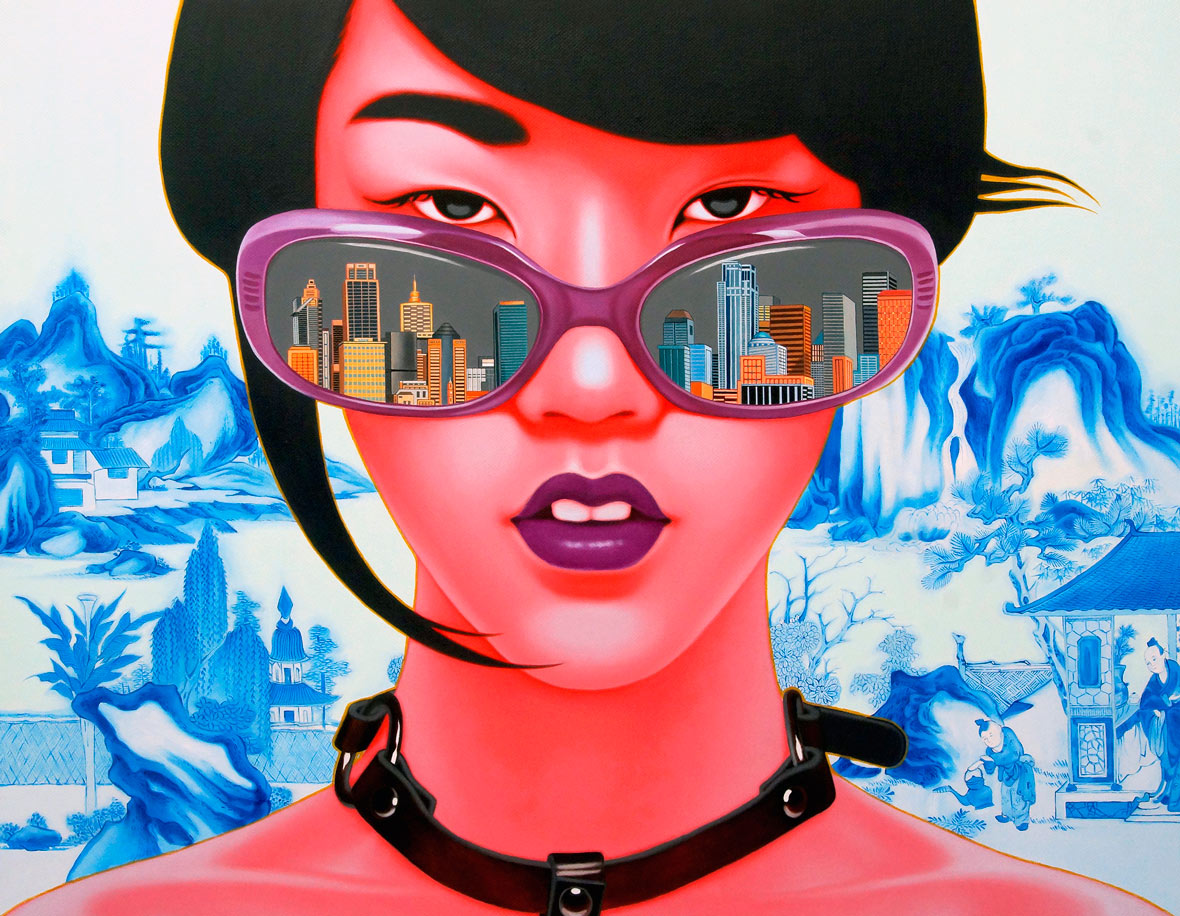
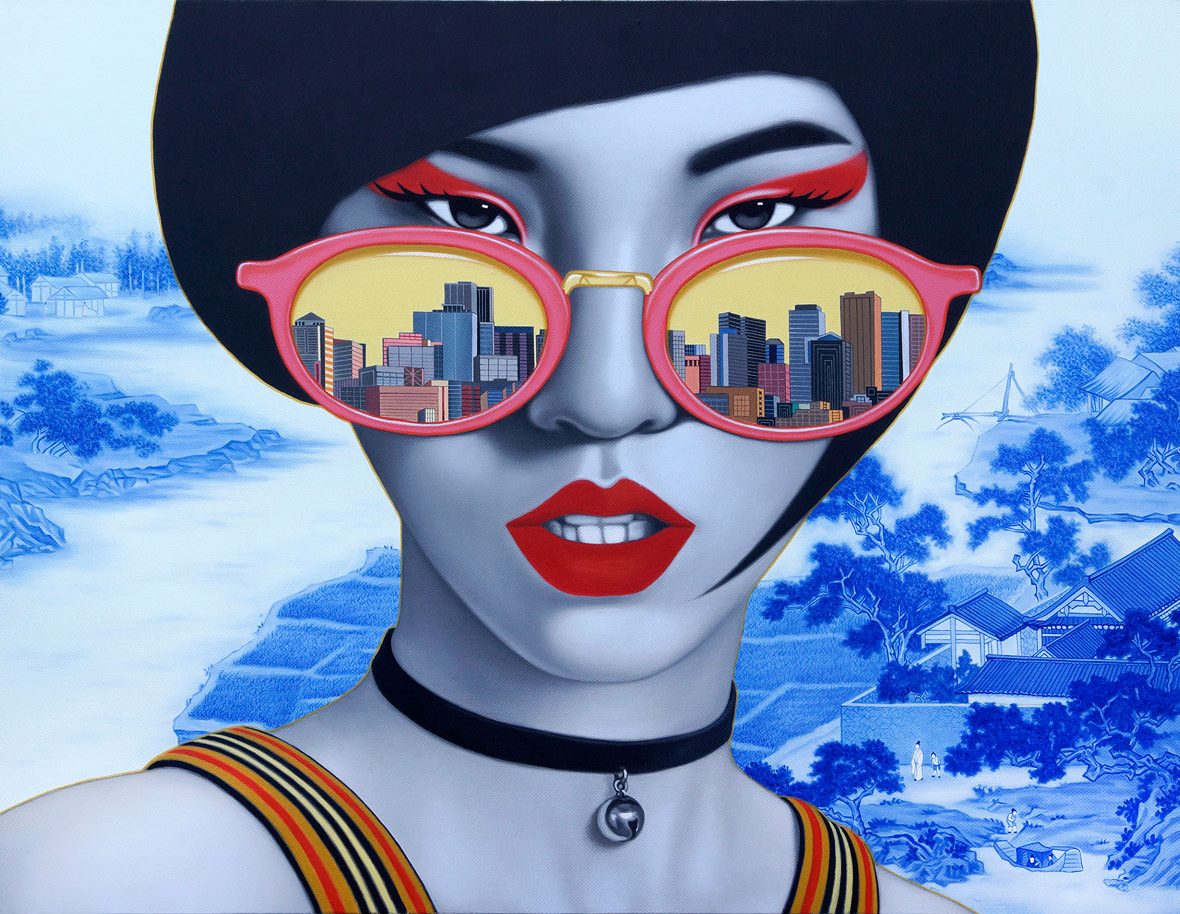
Xu’s art offers a clear-cut answer. With the inclusion of traditional porcelain designs and motifs such as koi fishes, peonies, and qipaos, his contemporary works seem keen on carrying Chinese traditions to the modern age. “In traditional Chinese culture, fishes represent wealth and desire,” he says. “I also see kindness in humans, and there’s beauty in that, especially in how this kindness is unwavering in the face of greed and temptation that pervade today’s society. I try to capture this splendor in my art. On the other hand, the blue-and-white porcelain design that captures the idle life of ancient Chinese is a reminder for city dwellers on the importance in maintaining harmony between nature and man.”
In more recent works, he makes nods to other techniques of traditional Chinese art, with clear nods to the six principles of Chinese painting and the use of negative space. Under his brush, Chinese art history is seamlessly nestled alongside contemporary aesthetics.
许德奇的答案是肯定的,无论从画面中精致的青花瓷画、还是频繁出现的鱼、以及牡丹花、旗袍等元素,都映证着他对中国传统文化精髓的延承,以及传达着艺术家本人的身份。在选择这些元素的同时,许德奇也带有自己的思考。他说:“鱼在中国的传统文化中代表着财富,同时也与性有关,代表着人们的欲望。我相信人性的善良,因此在作品中采用了很多美好的形象,寓意着人性在财富和欲望的诱惑下所呈现出的社会心态;青花瓷描绘古人的田园风光,是希望让都市中生活的我们,要心怀古人所追求的’天人合一’的居住愿景。”
而在《美女与野兽》系列作品中,许德奇还将中国传统绘画中的“六法”和“计白当黑”的绘画技巧融入在作品中,使当代艺术、以及创作中描绘的现代事物与“有无”“虚实”等传统艺术思想连接到一起。
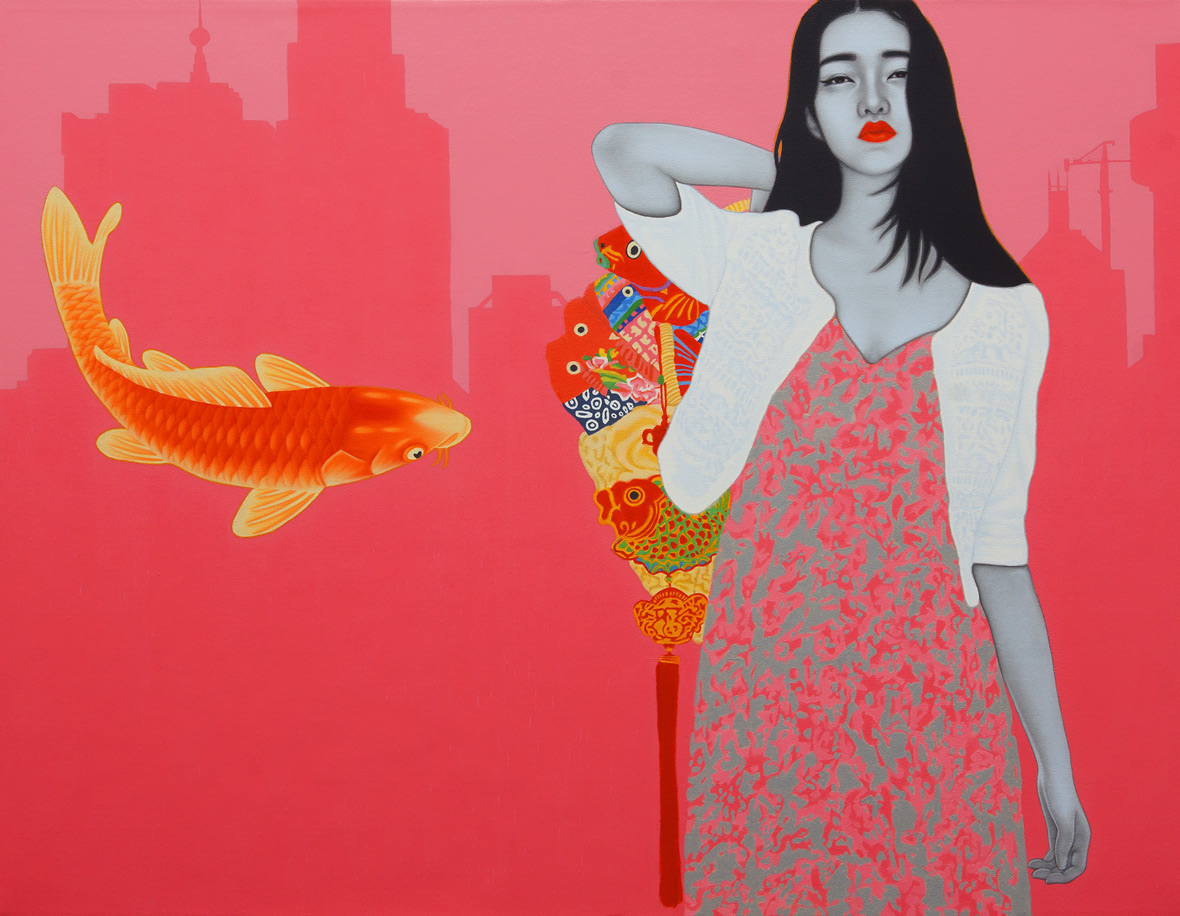
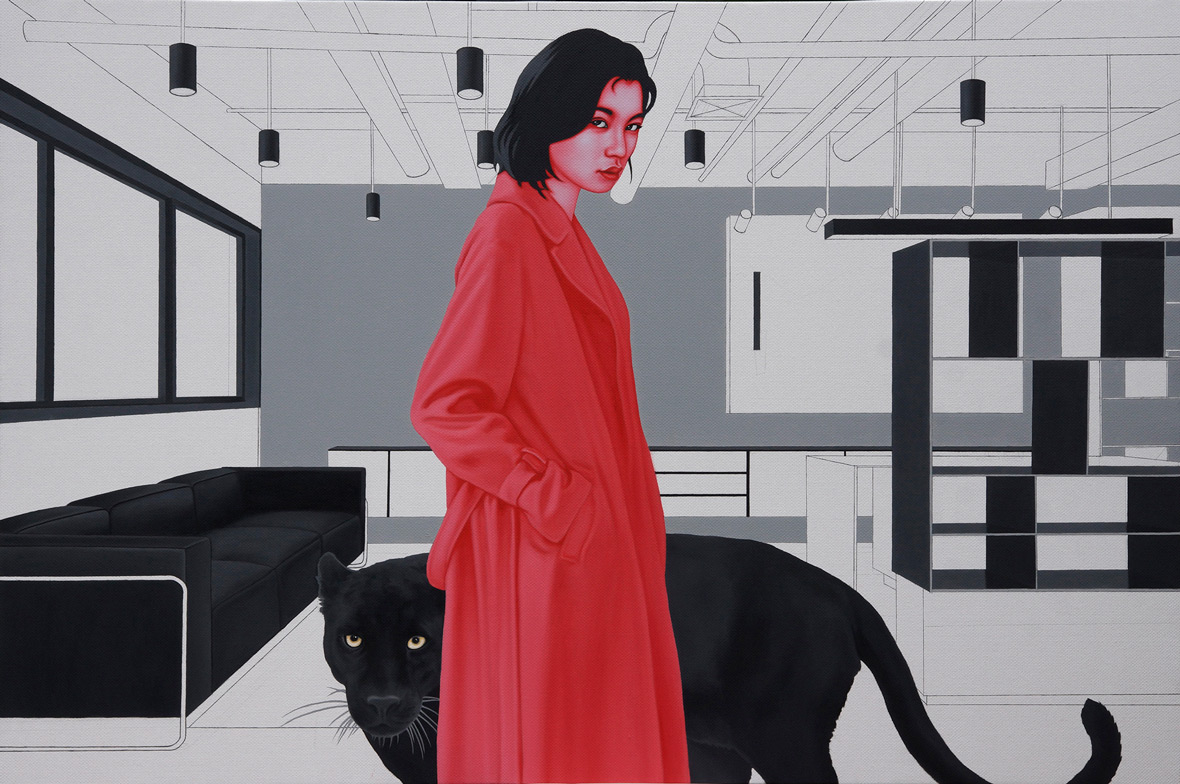
Xu has been developing the Underglaze Blue Girl series since 2009, and in his subsequent project, Beauty and the Beast, themes of human nature remain prevalent. The women in the follow-up series are shown walking alongside wild beasts. By painting these human and animal duos with contrasting colors and placing them in uncluttered settings, the characters seem to pop from the frame. But there’s an air of melancholy that hangs over these women, almost as if they’re troubled by unspoken thoughts. “The lions, tigers, and jaguars of the series are symbolic,” Xu explains. “They represent the ailments of modern society. The power imbalances, wage disparity, and disrupted order that test our capacity to be good people.”
Xu was only a child during the Cultural Revolution, but that period of strife left a deep impression on him. The political turmoil of Mao Zedong’s reign is hard to forget, and through his art, he hopes people can reflect on the hard-learned lessons of that time.
许德奇的作品不仅仅是对传统的赞颂,与对时代变化的感慨,更有对人性层面的剖析。在《美女与野兽》系列作品中,他运用人与野兽具象化的表达,探讨了更多关于人性的主题。画面中的女人通常与野兽结伴,不再像《青瓷女孩》、《中国女孩》一样着重刻画人物背景,而是用线条和冷淡的色彩勾勒,让观众将注意力放在人和动物之间的关系上面。画面上的女性角色并不开心,好像有故事要讲。许德奇解释道:“《美女与野兽》系列中出现的狮子、老虎、黑豹等野兽形象,主要是表现在权力制约、贫富差异、秩序莫测的社会状态下,对善良人性的拷问。”
“文化大革命”和”个人崇拜“时期正逢许德奇的童年,那段经历给他留下了深刻的印记。他希望能以当代艺术的方式,引发人们对那段时期的思考。
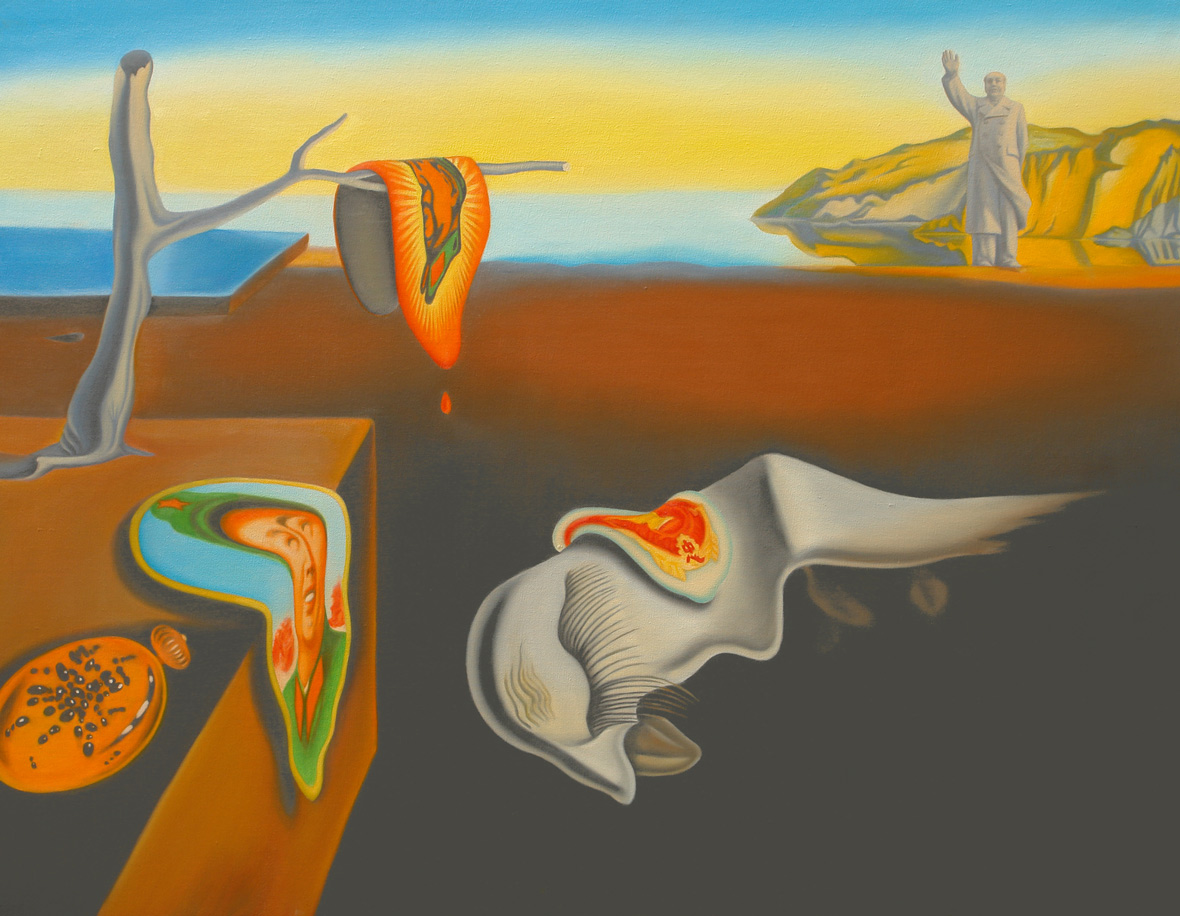

Xu refuses to characterize his work as pop art though. With a laugh, he says they’re just “fashion sketches” at best. Admittedly though, pop art has had a tremendous influence on him. But aside from pop art, the surrealism of Salvador Dali and René Magritte has also inspired mischievous parodies. His 2014 series Mao Dali is a clear homage to Dali’s Persistence of Memory, and the 2016 series Maogritte riffs on several of Magritte’s iconic works.
Whether it be through his use of color or the subject matters he paints, a sense of joy and hope radiates from Xu’s canvases. His blending of past and present is excites the imagination, and it’s something he’s keen on continuing. “I don’t know where my art will take me, but I’m sure my curiosity will guide me to exotic places,” he says. “I’ll keep working within the intersection of Eastern and Western culture, and in doing so, push the limits of paintings.”
许德奇并不认为自己是纯粹的波普,他笑称自己的作品是属于当代艺术的“时髦画作”,但也承认波普对他的影响力之重。与此同时,还有一些欧洲经典艺术元素也融入其中,例如在他 2014 年创作的《毛达利》系列中,他深受西班牙超现实主义大师萨尔瓦多·达利(Salvador Dalí)影响,并以毛泽东为素材进行创作。甚至直接对达利经典画作《记忆的永恒》进行重新演绎。再比如 2016 年,由他创作的《毛格里特》,也更像是与比利时杰出画家勒内·马格里特(René Magritte)画作开了场玩笑。这些幽默搞笑的创作内容,让作品带有几分叛逆,带观众体验许德奇对中西方艺术融合的巧思。
而无论从颜色,还是内容。许德奇的大部分作品,都传达出一种对未来的喜悦,以及某种希望。因为当传统与西方艺术形态的碰撞,本身就是一件令人兴奋不已的事。对于自己未来创作的方向,许德奇说:“其实我自己也并不确切的知道,我的艺术实践会走向何方,带着一颗好奇的心,去往有趣的地方,探索在中西方文化碰撞和交融中,寻求绘画在当下艺术形式的全新面貌。”
Like our stories? Follow us on Facebook and Instagram.
Website: www.xudeqi.com
Instagram: @xudeqi.artist
Contributor: Pete Zhang

